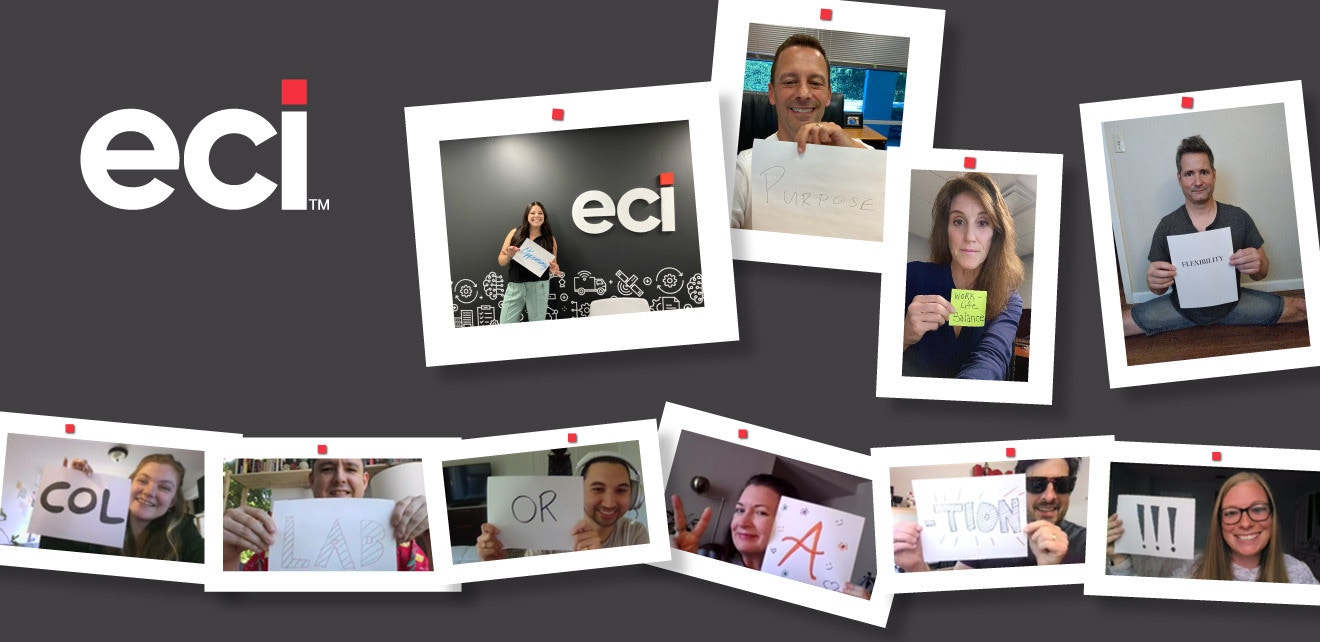Home > Blog
Read Time — 6 minutes
Does Your Company Have These 5 Elements of a Great Corporate Culture?

Employers are struggling to recruit and retain talent, but many have come to the important realization that improving company culture is the key to building and maintaining a strong workforce. Almost 70% of leaders credit a majority of their recent success to company culture, and 67% of employees and leaders say culture is more important to business success than strategy and operations, according to a 2021 PWC Global Culture Survey.
We’ve been scouring corporate culture surveys for years. With our collective finger firmly on the pulse of what makes a great company culture, we present what we believe are the top five elements for businesses in the verticals we serve.
Element #1: Sense of purpose
There’s more and more noise around the term “quiet quitting” these days, which refers to workers questioning the meaning of work and their priorities, as well as the pros and cons of their employment. This reflection is especially common among Millennial and Generation Z employees, for whom work should provide a sense of purpose.
So, what constitutes a sense of purpose at work? It can be a sense of direction or an understanding that one’s workplace contributions are important beyond the scope of business. That can be to the community or to society. A sense of purpose may mean different things to different employees, but it is incumbent upon employers to understand their employees and their priorities and to deliver on this expectation.
According to the 2023 O.C. Tanner Global Culture Report, sense of purpose is the most important element that defines a thriving culture, followed by sense of success and sense of opportunity. The report claims that nearly one in three employees don’t feel a sense of purpose and fulfillment, which makes them 399% more likely to actively look for another job and 340% more likely to leave the organization within a year.
Element #2: Opportunity, rewards, and recognition
From the moment you bring on new employees, create customized training plans and assign accountability. Make sure team members are continuously learning skills, developing leadership capabilities, and applying them on the job. Have your human resources manager or department work with talented and hard-working employees to create a career path within your organization, for their benefit and for succession planning. A culture of professional growth leads to positive word of mouth, including through social media – so it’s more powerful now than ever.
Conduct constructive bi-annual or annual performance reviews and determine position-appropriate rewards and incentives to engage and inspire employees. According to the 2022 Quantum Workplace Company Culture study, 53% of employees experience culture through recognition and celebrations, and 69% would work harder if they received more recognition. Employees need to feel challenged and recognized for their efforts in order to be satisfied. Compensation and benefits are key components of rewarding and recognizing performance. Selective candidates do their homework with benefits, so make sure yours are at least on par with the companies that could lure your best employees away.
Element #3: Flexible work arrangements
Flexible work arrangements aren’t just a trend. It’s an enduring paradigm among companies that attract top talent in their sectors. According to the 2022 McKinsey American Opportunity Survey, when people have the chance for at least some remote work, 87% embrace the opportunity and spend an average of three days a week working from home. People offered full-time, flexible work spent a bit more time working remotely, on average, at 3.3 days a week. Furthermore, the survey found that most industries do support some level of flexibility. Nearly 60% of employed respondents say they can work from home currently, and 65% say they would be willing to do so all of the time.
Element #4: Work/life balance
According to recent studies, 66% of full-time employees in America do not have a work-life balance, and 60% blame their bosses. Spending more than 55 hours a week at work increases the risks of anxiety and depression. Countless studies have correlated the quality of life in countries with work-life balance, and the younger generations of workers in the US are familiar with such findings.
While American exceptionalism is still a national value, workaholism appears to be diminishing as a personal virtue. Employees want to enjoy fuller lives, including time with family and friends. They want the ability to travel and pursue interests outside of work. Employers that see well-roundedness as an asset in their employees benefit by being able to attract talent and promote their mental well-being. A work/life balance contributes to better employee satisfaction scores, engagement, and retention, which all factor heavily into the company culture.
Element #5: Collaboration and teamwork
Collaborative workplace cultures share the features of trust, communication, transparency, dissemination of knowledge, and engagement. They have physical spaces and virtual tools to promote relationship-building and discussion, and they tap employees’ full potential through teamwork and deliberation. This is particularly important in a diverse company, in which people from different backgrounds come together with different ideas and perspectives and elevate innovation.
According to recent studies, roughly 75% of employees regard collaboration and teamwork as important, and 83% of employees rely on technology for collaboration, including enterprise resource planning (ERP) solutions.
Beyond driving innovation, collaborative cultures drive employee satisfaction. Professionals enjoy the feeling of contributing to a team, and of receiving recognition from their peers. Collaborative environments are energizing and positive; they make employees feel more excited about work and less stressed. Once employees experience a collaborative culture, anything less seems… well… less civilized.
One of the first steps you can take toward improving your company culture is to rate your company for each of these five factors on a scale of 1 to 10 (10 being the strongest). Then ask your leaders and team members to do the same. Focus on improving your areas of weakness and retake the survey every quarter until you arrive at the total your leadership team establishes today as the representation of excellence in company culture.
Did you like this article? You might like these as well:



